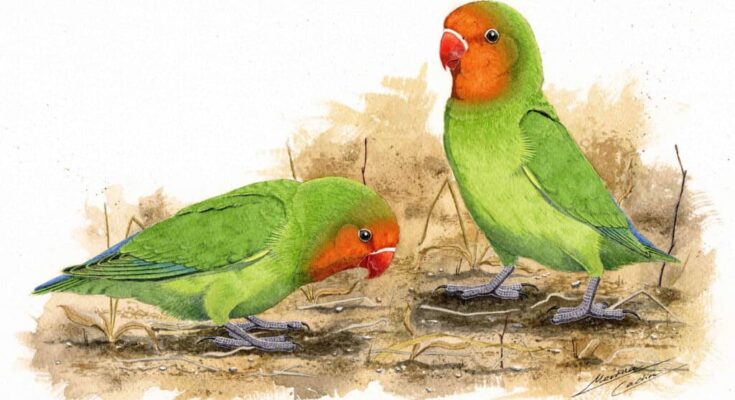
A group of paleontologists have discovered the bones of a new lovebird species in three caves located in South Africa’s Cradle of Humanity. This area, recognized as a UNESCO World Heritage site, is about 50 kilometers northwest of Johannesburg.
The Cradle of Humanity is famous for being the world’s largest site with ancient human remains. Spanning 47,000 hectares, it is a complex area with many limestone caves.
Bird fossils are usually very delicate and often break into small pieces. Scientists then have to carefully piece them back together for study, or sometimes only one specimen is found. However, in a surprising discovery, this new lovebird species was found with 96 complete and sub-complete bones.
These bones were uncovered at Kromdraai, Cooper’s Cave, and Swartkrans. The fossils include all the major wing bones, such as the humerus, ulna, and carpometacarpus, along with the tarsometatarsus. There were also fragments of the lower jaw and coracoid, as reported by Forbes.
Newly found lovebird species lived 2.5 million years ago
The newly discovered species, now named Agapornis longipes, lived in South Africa about 2.5 million years ago. Its fossils were found in three limestone caves famous for ancient human ancestors and various other animals.
The paleontologists reported that the three fossil sites—Swartkrans, Cooper’s Cave, and Kromdraai—are located just a few hundred meters apart in the southern part of the Cradle of Humanity. They are situated about one kilometer east and roughly 1.5 kilometers northeast of the Sterkfontein Caves.
The fossils reveal that Agapornis longipes is one of the smallest lovebirds ever identified. This conclusion comes from comparing the length ratios of its forearm (humerus) to its lower leg (tarsometatarsus) with those of other living and ancient lovebirds.
Agapornis longipes stands out from the nine living species of lovebirds and its extinct relatives, Agapornis atlanticus and Agapornis attenbouroughi, due to several unique physical traits. Despite its small size, Agapornis longipes is distinguished by its proportionately longer legs—in relation to other known lovebird species, as reported by Forbes.
Long legs of ancient species linked to feeding habits
The study authors suggest that the long legs of Agapornis longipes may have been an adaptation for feeding. Modern lovebirds with similar leg proportions tend to gather food from the ground, while others also collect seeds or fruits from trees.
Agapornis longipes likely used its longer legs to safely forage for grass seeds on the ground in the tall, dense grasslands that covered the Cradle of Humanity during the Plio-Pleistocene transition and the Early Pleistocene.
The study authors noted that nearly all Agapornis species primarily eat grass seeds and, to a lesser extent, fruits. These birds are generally found in areas with grasslands, permanent water sources, and tall trees. These trees offer natural cavities or holes, often made by other birds like woodpeckers or barbets, where the lovebirds can nest.



